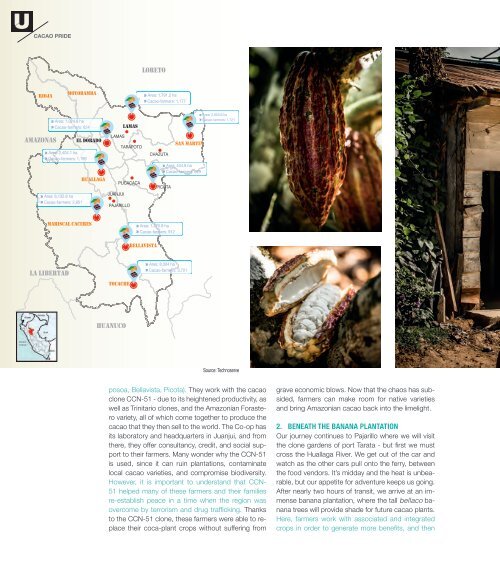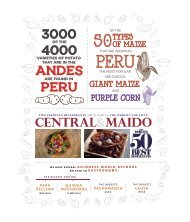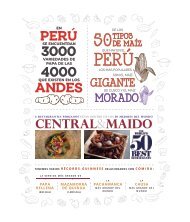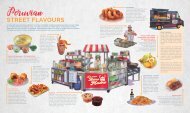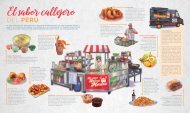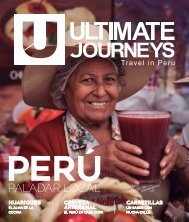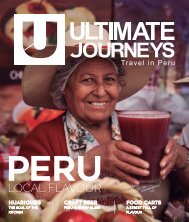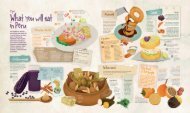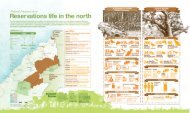UJ #7 - Peruvian Amazon
You also want an ePaper? Increase the reach of your titles
YUMPU automatically turns print PDFs into web optimized ePapers that Google loves.
CACAO PRIDE<br />
loreto<br />
rioja<br />
moyobamba<br />
Area: 1,791.2 ha<br />
Cacao-farmers: 1,177<br />
amazonas<br />
Area: 1,024.8 ha<br />
Cacao-farmers: 624<br />
lamas<br />
LAMAS<br />
el dorado<br />
TARAPOTO<br />
Area: 2,404.1 ha<br />
Cacao-farmers: 1,199<br />
huallaga<br />
PUCACACA<br />
Area: 6,132.8 ha<br />
JUANJUI<br />
Cacao-farmers: 2,851<br />
PAJARILLO<br />
san martin<br />
CHAZUTA<br />
Area: 404.8 ha<br />
Cacao-farmers: 329<br />
PICOTA<br />
Area: 2,653.6 ha<br />
Cacao-farmers: 1,721<br />
mariscal caceres<br />
Area: 1,425.8 ha<br />
Cacao-farmers: 912<br />
bellavista<br />
la libertad<br />
tocache<br />
Area: 8,304 ha<br />
Cacao-farmers: 3,721<br />
huanuco<br />
PACIFIC<br />
OCEAN<br />
Source: Technoserve<br />
posoa, Bellavista, Picota). They work with the cacao<br />
clone CCN-51 - due to its heightened productivity, as<br />
well as Trinitario clones, and the <strong>Amazon</strong>ian Forastero<br />
variety, all of which come together to produce the<br />
cacao that they then sell to the world. The Co-op has<br />
its laboratory and headquarters in Juanjui, and from<br />
there, they offer consultancy, credit, and social support<br />
to their farmers. Many wonder why the CCN-51<br />
is used, since it can ruin plantations, contaminate<br />
local cacao varieties, and compromise biodiversity.<br />
However, it is important to understand that CCN-<br />
51 helped many of these farmers and their families<br />
re-establish peace in a time when the region was<br />
overcome by terrorism and drug trafficking. Thanks<br />
to the CCN-51 clone, these farmers were able to replace<br />
their coca-plant crops without suffering from<br />
grave economic blows. Now that the chaos has subsided,<br />
farmers can make room for native varieties<br />
and bring <strong>Amazon</strong>ian cacao back into the limelight.<br />
2. BENEATH THE BANANA PLANTATION<br />
Our journey continues to Pajarillo where we will visit<br />
the clone gardens of port Tarata - but first we must<br />
cross the Huallaga River. We get out of the car and<br />
watch as the other cars pull onto the ferry, between<br />
the food vendors. It’s midday and the heat is unbearable,<br />
but our appetite for adventure keeps us going.<br />
After nearly two hours of transit, we arrive at an immense<br />
banana plantation, where the tall bellaco banana<br />
trees will provide shade for future cacao plants.<br />
Here, farmers work with associated and integrated<br />
crops in order to generate more benefits, and then


